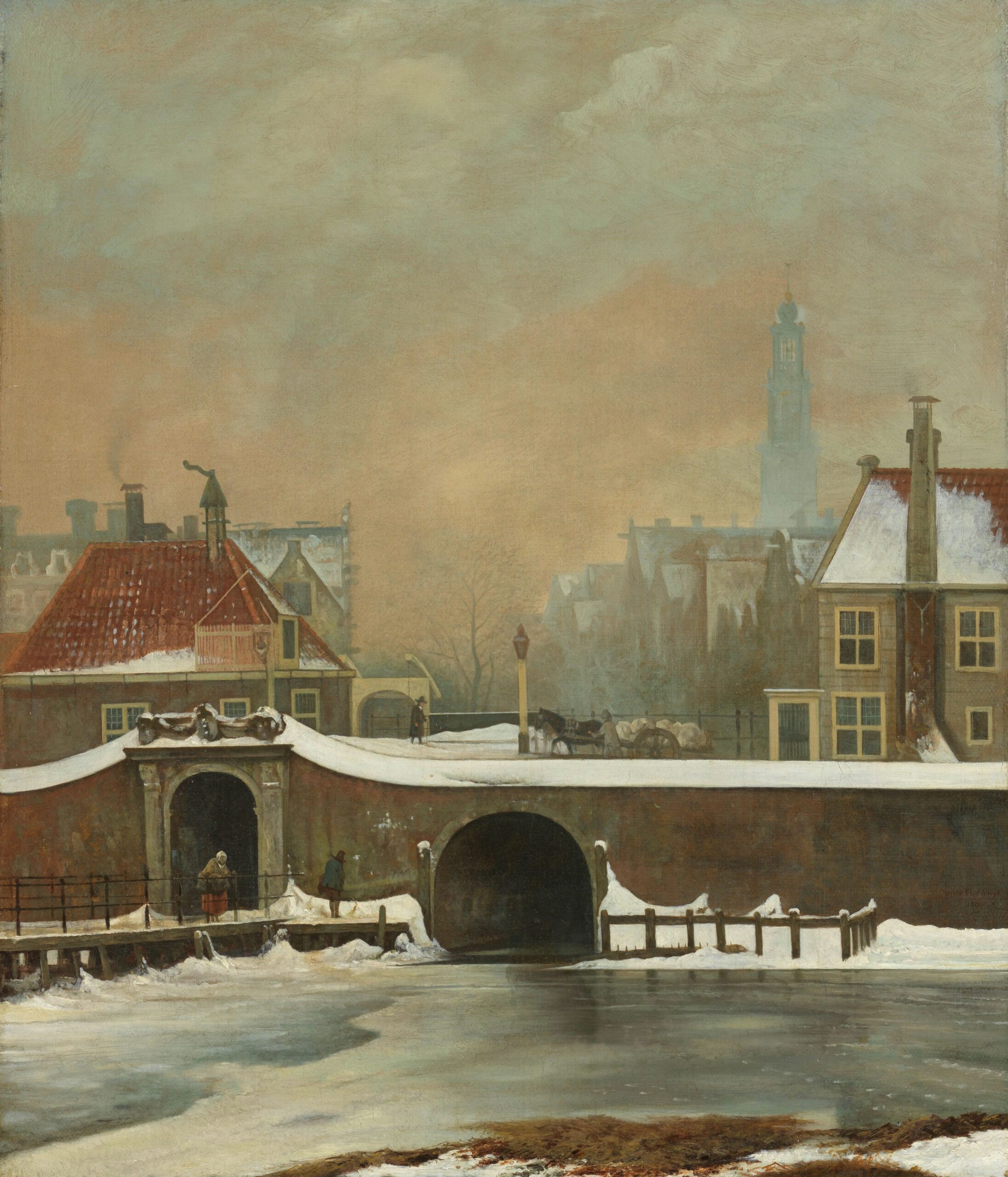Lemuël de Graav: Come and Dance, Girl
Eighteen young writers from Flanders and the Netherlands have brought nineteenth-century artefacts from the Rijksmuseum to life. They wrote their stories in response to the question: what do you see when you look at these objects through the lens of impending doom? Lemuël de Graav found inspiration in Wouter Johannes van Troostwijk’s painting The Raampoortje in Amsterdam. ‘The beggar sings his heart out and the streets fill up.’
 Wouter Johannes van Troostwijk, The Raampoortje in Amsterdam, 1809
Wouter Johannes van Troostwijk, The Raampoortje in Amsterdam, 1809© Rijksmuseum Collection, Amsterdam
Come and dance, girl
The bricks of the Raampoortje draw closer together
when a blanket of snow is wrapped around them. The
Bloemgracht yawns gaping holes in her water, and the local
accordion takes deep breaths up and down the street.
As a beggar shakes the last few drops of gold from his todger,
he lets sinuous tones flow down his rusty vocal cords.
In a colourful accent he flings an anthem straight from the
equator up and down the street.
‘Alonki kon dansi,
Alonki kon dansi,
kon dansi Mek granman si
kon dansi Mek kownu si’
The beggar sings his heart out and the streets fill up. Labourers and
dignitaries walk arm in arm and will not allow the night
to rob the canal of light today.
Kon dansi they holler.
Kon dansi sounds up and down the streets.
Slowly and probingly the festive vibrations now also hit
the concrete of the raampoortje.
Why does it not sing or respond.
The bricks sound rock-solid.
They store vibrations,
and release them as echoes.
Echoes that only wind up where there’s room
and always find their way home.
Echoes that have morphed into nursery rhymes
we are still learning to understand
Echoes that will only fade
once everybody has heard
where the beggar got his song
and what happened in that land












